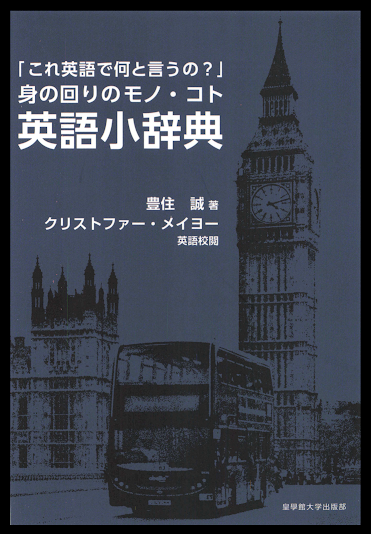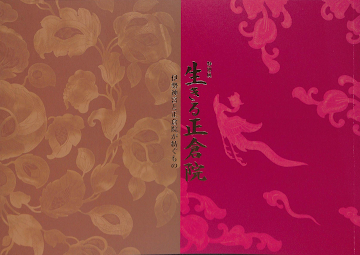- 英語音声指導の現状と改善策 ―中学校におけるやり取りを中心に―
- 日本におけるオートバイロードレースの現状と課題 ―魅力発信の比較研究―
- 文明の衝突論の再検討 ―ロシアによるウクライナ侵攻を中心に ―
- 自転車ヘルメット着用における努力義務化の効果に関する一考察―安全意識向上を中心に―
- 観光地情報提供のデジタル化 ―伊勢志摩とクアラルンプールの案内を中心に―
- 伊勢湾のサワラブランドにおける高付加価値化 ―「答志島トロさわら」「波乗り鰆」の事例分析―
- 文化資源の商品化の一考察―「神宮杉」を中心に ―
- 先進国首脳会議と開催地の観光資源 ―2016年のG7伊勢志摩サミットと2023年のG7広島サミットの比較研究―
- ダークツーリズムの魅力に関する研究 ―チェルノブイリ原発事故とタイタニック号沈没事故を中心に―
- サッカー観戦から見る国内外のイメージと現実の考察
- 日本語教育におけるアスペクトの説明 ―日中の日本語教科書を中心に―
Sunday, January 28, 2024
Graduation Papers
Thursday, January 25, 2024
My Last Seminar at Kogakkan
Today, I finished my last seminar at Kogakkan University. I have enjoyed teaching this seminar for nearly a decade in a supportive and stimulating educational atmosphere with many outstanding students, so it was difficult to say goodbye to the class.
ゼミのタイトル Seminar Title: 「日本の過去と現代」ゼミ Japan’s Past and Present Seminar
① ゼミ紹介 Seminar Introduction
【キーワード】 ディスカッション Discussion 、プレゼンテーション Presentation 、比較文化史 Comparative Cultural History 、日英・英日翻訳 English<->Japanese Translation
ディスカッションとプレゼンテーションを通じて、日本の過去と現在の接点を探求する。3年生では、日本三大随筆(『枕草子』、『方丈記』、『徒然草』)などの古典文学を題材に用い、現代にも通じる要素を確認しながら、日本文化の理解を深める。また、これらと並行して、英語で観光案内看板・地図、博物館展示の解説パネル、インターネットに投稿するビデオの作成などによって、世界に日本の歴史・文化を実際に発信していく。4年生では、各自の卒業論文完成に向け、専門領域の知識を習得するとともに必要な文献の精読、論文の書き方を学ぶ。教職・一般企業・公職に求められている英語力を培う。
Third-year students deepen their understanding of Japanese culture through discussions and presentations. We read classical literature such as Japan’s three most representative works from the "random jottngs" or "heterogenous narrative" (zuihitsu) genre--The Pillow Book by Sei Shōnagon, Hojoki by Kamo no Chōmei, and Tsurezuregusa by Kenkō Hōshi--to identify elements that are still relevant in today’s society. At the same time, we communicate Japanese history and culture to the world by creating English-language tourist information signs and maps, explanatory panels for museum exhibits, and videos to be posted on the Internet. In the fourth year, students acquire knowledge in the topics they want to focus on, read the necessary sources, and improve their writing as they work to complete their graduation theses. In this seminar, students cultivate English language skills required for teaching, general business, and public service.
② Seminar Characteristics ゼミの特色・他のゼミとの違い
日本の歴史・文化をテーマにして、授業形態は英語でのプレゼンテーションとディスカッションが中心となる。たとえ、日本の歴史に詳しくなく、英語が得意でなくても、気軽に履修することができる。ただし、積極的に授業に参加してもらいたい。卒業論文の研究テーマは学生の自主性を重んじる。それぞれのテーマで論理的思考能力を育成し、情報収集と整理の方法を習得し、文献の読解能力を養い、論文執筆能力の向上を最終目的にしてゼミを行う。英語の卒業論文も可能である。
The theme of the course is Japanese history and culture, and the format of the class is mainly presentations and discussions in English. Even if you are unfamiliar with Japanese history and English is not your strong suit, you are welcome to take this course. However, students are expected to participate actively in class. Each student chooses their research topic for their graduation thesis. The seminar is designed to foster logical thinking skills for each topic, learn how to collect and organize information, and develop reading skills. The ultimate goal of this seminar is to improve each student's writing ability to complete the graduation thesis. English graduation theses are also welcome.
③ 担当専門科目 Classes Taught in the Department
「日本文化史Ⅰ・Ⅱ」、「英語音声学Ⅰ・Ⅱ」、「Global Japan」、「Tourism English」、「Japanese Culture and History」、「Shinto English」という学科専門科目を担当している。ビジネス・プロフェッショナル、外国人の接客、英語教員として求められる基礎知識とスキルを養成する科目であり、他の担当科目と連動して構成されている。外国人とより良いコミュニケーションを取るのに役に立つので、中・高(英語)免許取得希望の学生もこの授業を選択することが望ましい。Japanese Cultural History I & II, English Phonetics I & II, Global Japan, Tourism English, Japanese Culture and History, and Shinto English. These courses are designed to cultivate the essention knowledge and skills needed by business professionals, people working with non-Japanese customers, and English teachers. The courses are designed to connect with others I teach at Kogakkan. Students who wish to obtain a junior or senior high school (English) license should also select this class, as it is helpful for better communication with non-Japanese speakers of English.
Thursday, June 29, 2023
Spring Semester: Comparative Cultural History Workshop for Europe and Japan 日欧比較文化史部会
Today was our last meeting of the "Comparative Cultural History Workshop for Europe and Japan" 日欧比較文化史部会. In the workshop, we read, translate, and discuss English and Japanese research about Japanese history. If you are interested in joining us next semester, please talk to me or Professor Okano Tomohiko 岡野友彦 (History Department 国史学科).
Saturday, June 10, 2023
A Documentary on the Chronicles of Japan 日本書紀
The university students's television studio at Kōgakkan University have completed an English version of a documentary on the Chronicles of Japan 日本書紀.
I provided a brief introduction to it at the beginning. However, the rest of the English narration in the video was provided by one of Ms. Kunimoto, who was responsible for the project from the initial planning stages to the final editing.
Below is a transcription of my introduction to the video:
"Hello, and welcome to this video documentary. My name is Christopher Mayo, and I am a faculty member at Kogakkan University 皇學館大学. Our university is located in Ise City, Mie Prefecture. It is one of only two universities in Japan where students can become certified as Shinto priests. One of the most sacred sites in the Shinto tradition, the Ise Jingu shrine complex 伊勢神宮, is located nearby. The documentary you are about to watch was produced by the Kogakkan University Student Television Station, which is run by students who create the material from start to finish, including the planning, filming, and editing of videos. This documentary is focused on an ancient text called the Nihon Shoki, or Chronicles of Japan. The Nihon shoki 日本書紀, or Nihongi, was compiled and written down in the eighth century based on earlier written records and oral traditions. As the first of the so-called Six State Histories 六国史, or Rikkokushi, it took the form of an official history. The first two volumes contained material dealing with the divine origins of Japan. The remainder followed the activities of Japan’s sovereigns up until the end of Empress Jitō’s reign in 697. W.G. Aston first translated it into English in 1896. As this video explains, the Nihon shoki remains a key source for anyone interested in learning more about Japanese beliefs, customs, history, and ideas. We hope you enjoy the video."
Monday, December 19, 2022
“Images of Ise in Essays in Idleness at the Intersection of Literature and History”『徒然草』における伊勢像 ~文学と歴史の接点~
I recently gave a talk in Japanese about Kenkō’s Essays in Idleness at Isuzujuku 五十鈴塾, a beautifully maintained set of traditional-style buildings in Ise that hosts educational and cultural events. The title was “Images of Ise in Essays in Idleness at the Intersection of Literature and History”『徒然草』における伊勢像 ~文学と歴史の接点~.
Although most people in Japan are familiar with the text, researchers generally focus on literary and cultural themes rather than the connections made between the words on the pages and physical places. In my talk, I examined images of Ise that appeared in this 14th-century medieval text authored by an individual known to us by the name of Kenkō. What I tried to do is to read Japanese history through the text, especially passages related to Ise such as the 24th and 50th essays in it. I hope that the participants found it as enjoyable as I did to explore history, culture, and ideas in this text.
This is a brief description in Japanese that I used for the talk:「兼好法師が十四世紀に著した『徒然草』を題材にして、そこに描かれた伊勢像を考えてみます。第二十四段の「斎王の野宮におはしますありさまこそ」や第五十段の「伊勢国より、女の鬼に成りたるを」などの文学を通して日本文化史を読んでみませんか。このお馴染みの古典文学を「伊勢」という視点から見直してみたい方は、ぜひご参加ください。」
If you ever have an opportunity to visit Ise or Ise Shrine 伊勢神宮, please stop by and join a class or take a look at the Isuzujuku buildings.
Sunday, September 25, 2022
Publication: 「これ英語で何と言うの?」身の回りのモノ・コト英語小辞典
Toyozumi Makoto and Christopher M. Mayo メイヨークリストファー, proofreader 校閲. “Kore Eigo de nan to iu no?”: Mi no mawari no mono, koto Eigo jiten. 「これ英語で何と言うの?」身の回りのモノ・コト英語小辞典. Ise City: Kōgakkan University Press 皇學館大学出版部, 2022年9月25日.
Professor Toyozumi wrote this dictionary for teachers in K-12 who are teaching English and want to be able to use words and phrases that are familiar to students in their school and social environment. He invited me to do the proofreading for it, and we spent quite a bit of time with each entry, trying to find the best English equivalent and providing Japanese explanations as necessary.
Tuesday, September 13, 2022
Publication: 図録 特別展「生きる正倉院―伊勢神宮と正倉院が紡ぐもの―」
Jingū Shichō 神宮司庁. Zuroku tokubetsu ten: Ikiru Shōsōin: Ise Jingū to Shōsōin ga tsumugu mono 図録 特別展「生きる正倉院―伊勢神宮と正倉院が紡ぐもの―」. Ise City: Jingū Shichō 神宮司庁, 2022年9月13日. (English translation 翻訳: Mayo, Christopher M. メイヨークリストファー, et al.)
Ise Jingū organized a gorgeous exhibition of sacred shrine objects to be displayed with the replicas of items from the Shōsōin treasures, which are designed and crafted in the original manner with no expense spared. I worked with the organizers and Professor Emeritus Sakurai Haruo 櫻井治男 to complete the translation, which was a complicated and time-consuming project that had many challenging constraints. Thanks to the tremendous efforts of everyone involved, though, I think we were able to produce a solid English translation that can be a useful reference for future exhibitions.










